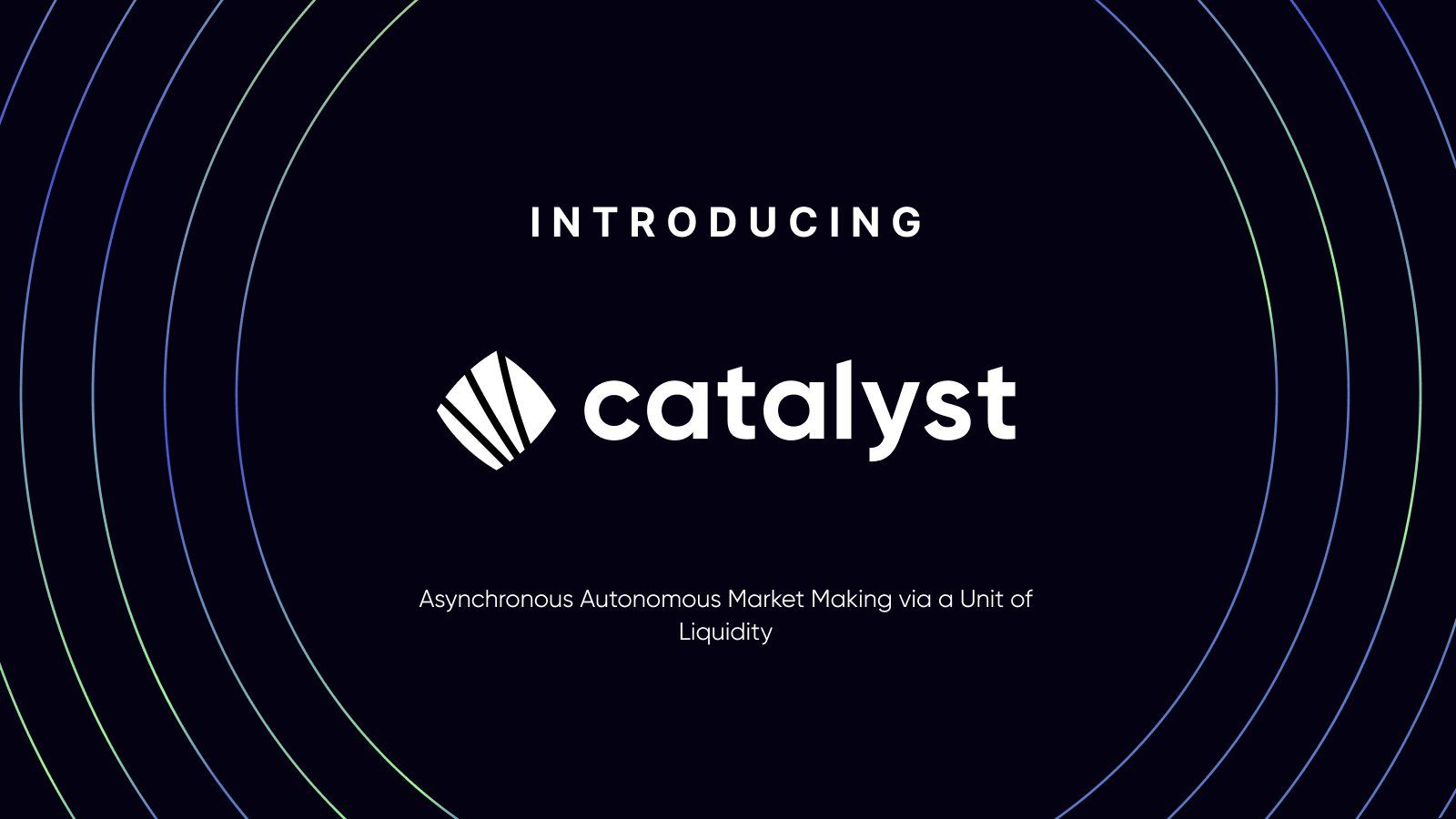Explaining the Unit of Liquidity

Catalyst aims to build the permissionless liquidity layer for the future of millions of chains. Catalyst’s vision is to dissolve the barriers that have long separated blockchains.
By connecting different chains, Catalyst creates an era of free trade and boundless opportunities. Just as the Internet connected isolated computers into a global network of information, Catalyst aims to weave isolated blockchains into a unified web of financial opportunities.
Last week, we unveiled the Unit of Liquidity whitepaper, a comprehensive dive into the mathematical theory that powers the Catalyst Protocol. This innovative abstraction, forming the heart of the Catalyst system, could fundamentally transform how we exchange assets across different blockchains.
Today, we aim to demystify this groundbreaking concept, taking a higher-level view to unpack its potential and its integral role in enabling Catalyst's vision.
What exactly is the Unit of Liquidity and how does it make Catalyst unique among cross-chain liquidity solutions?
Let’s dive into the mechanics of the Unit of Liquidity, how it unlocks new possibilities, and why it makes Catalyst a unique and groundbreaking player in the arena of cross-chain liquidity solutions.
What is the Unit of Liquidity?
In the simplest terms, the Unit of Liquidity is an abstract representation of asset value that can be transferred between blockchains.
Picture it as a kind of receipt that an individual can redeem from one chain to another.
When an individual deposits an asset, they can use the Unit of Liquidity as a receipt to redeem assets on another chain (or even the same chain).
Importantly, the Unit of Liquidity does not have an inherent meaning of its own; rather, it signifies the ratio of value between two assets, providing a standard accounting mechanism that facilitates cross-chain swaps.
The Challenge of Cross-Chain Swaps
To understand the power of the Unit of Liquidity, we need to grasp the problem it solves.
Traditional Automated Market Makers (AMMs) price assets based on their internal state, which means the balances of assets within the AMM. But when you have pools of assets scattered across different chains, each with limited and imperfect knowledge of the others, a fully-informed AMM state is impossible to achieve.
Existing solutions try to mitigate this state synchronisation problem through two types of implementations: Central Executor projects and Bridging Token projects. Let's take a closer look at these categories and the challenges they present.
Central Executor Projects
Central Executor projects facilitate cross-chain swaps by re-centralising logic into an off-chain environment, such as a separate blockchain or a private server. The process involves bridging assets onto this separate environment, which then issues IOUs (i.e., wrapped tokens) to the user.
While such models offer the benefits of traditional AMMs once assets are bridged (as the liquidity becomes centralised at a single point), they inadvertently contribute to ecosystem fragmentation by shifting liquidity off-chain.
Moreover, the security of such solutions is a matter of concern.
Central Executor projects introduce six extra attack surfaces: two bridge wallets, two bridges, one IOU synthetic token, and one additional chain.
Each additional component presents a potential point of failure, increasing the overall system complexity. Past exploits targeting bridge-owned smart contract wallets and bridges themselves serve as stark reminders of these vulnerabilities. Additionally, the central executor – another consensus network – brings its own set of security assumptions and can become a potential attack surface or a bottleneck.
Bridging Token Projects
In Bridging Token projects, users acquire assets through an ordinary AMM and subsequently trade them for assets on another chain. This process involves issuing an intermediary token to facilitate the transaction.
However, this approach comes with its own set of challenges.
Firstly, users and liquidity providers must place their trust in the intermediary token, which adds an extra swap. For market makers, it also means understanding the complex dynamics between a fixed supply token and the variable demand for providing liquidity.
As more liquidity enters the system, the price of the intermediary token rises, resulting in market-making losses for liquidity providers. The opposite is also true.
Furthermore, an AMM using a common bridging token not only requires trust in the bridging token but also exposes the system to additional security risks if the bridging solution relies on bridge wallets, introducing two more potential attack surfaces.
The need for liquidity is effectively doubled compared to a traditional AMM, while still offering comparatively inferior swaps.
These existing solutions, while pioneering in their own right, highlight the need for a more seamless, secure, and user-friendly approach. This is where Catalyst and its innovative Unit of Liquidity come into play.
The Solution: Unit of Liquidity
So, how can a cross-chain swap be executed without a complete picture of the AMM state?
The answer lies in the abstraction that the Unit of Liquidity provides.
The Catalyst system splits an asset swap into two parts: firstly, the input asset amount is converted into a Unit of Liquidity, which encapsulates the value of the input asset. Then, this Unit of Liquidity is used to extract the output asset from a connected pool.
The beauty of this approach is that it makes the process self-contained within the pool the asset resides in, eliminating any dependence on the state of an external pool.
The unit of liquidity is designed such that it can be easily transmitted between pools asynchronously. The result is significantly fewer components: one pool on each chain connected by a cross-chain messaging layer.
Catalyst is a cross-chain automated market maker that only needs an interoperability messaging layer to operate.
The Unique Benefits of the Unit of Liquidity
The creation of the Unit of Liquidity paves the way for several distinct benefits. Catalyst becomes the first liquidity layer to allow permissionless creation of cross-chain pools, thereby providing support for the long tail of assets not found on any other on-chain venue.
Users can execute 1-click transactions on any supported chain, swapping native assets without cumbersome bridging or reliance on wrapped assets.
Liquidity scales as there is a single-sided pool per asset per chain, and security is enhanced as the attack surface is limited to a single bridge message.
Catalyst is also secure due to its simplified design. One cross-chain message is sent—as opposed to the 4-6 attack surfaces of existing solutions.
Catalyst: A Game Changer in Cross-Chain Liquidity
In summary, the Unit of Liquidity is a crucial element in Catalyst's vision to provide a seamless, permissionless liquidity layer for the modular future.
It empowers users to engage with new applications on chains they don't yet have assets in and eases the process of cross-chain asset swapping. As such, Catalyst, through its Unit of Liquidity innovation, is positioned to redefine the landscape of cross-chain liquidity solutions.
Want to learn more about the Unit of Liquidity? Check out the full whitepaper.

